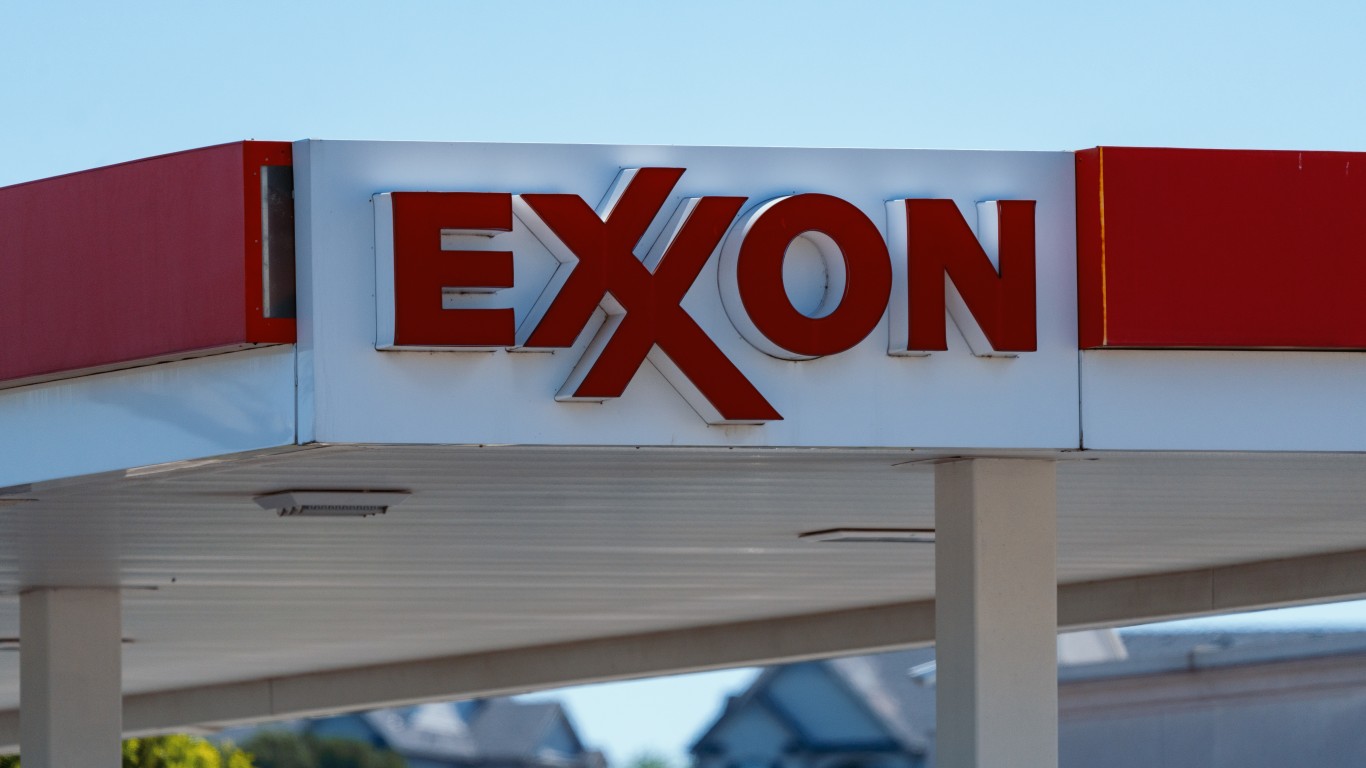Energy
Is Exxon Mobil Better Positioned Than Chevron Ahead of Earnings?

Published:
Last Updated:

This week will mark the end of peak earnings from the S&P 500 companies. The mixed reports from many major corporations have created big gains or big losses afterward. Energy stocks have yet to participate in the great stock market rally, and this Friday will bring earnings from both Chevron Corp. (NYSE: CVX) and Exxon Mobil Corp. (NYSE: XOM).
24/7 Wall St. wanted to “compare and contrast” to see which company may look more attractive, as the two most dominant oil and gas stocks can have an impact on many companies in the same space.
Chevron will report its second-quarter results on Friday. The Refinitiv consensus estimates are $1.82 in earnings per share (EPS) and $40.55 billion in revenue. Its shares were trading at $124.25 on Monday. The 52-week range is $100.22 to $128.55.
Exxon also is set to report its most recent quarterly results on Friday. Analysts are looking for EPS of $1.16 and $10.96 billion in revenue. The shares were trading at $75.10, in a 52-week range is $64.65 to $87.37.
A screen on Finviz reveals that both Exxon and Chevron trade at about 17 times trailing earnings and just under 15 times forward earnings. Both companies have very similar percentages of returns, measured by return on assets, return on equity and return on investment.
Chevron was valued at 1.5 times book, compared with almost 1.7 times book value for Exxon.
There is a difference in dividends as well, with Exxon’s 4.6% yield topping Chevron’s 3.85%.
While Chevron has a lower yield and is a bit cheaper in book value, it has generated a total year-to-date return of 13.7%, better than the 9.7% for Exxon. Over the past year, Chevron’s loss of 1% is less bad than Exxon’s 10.5% loss.
Chevron’s current price is less than its consensus target price of $137.67, implying more than 10% upside potential, before adding in its 3.85% dividend yield. Exxon’s current price compares with a consensus analyst target of $83.92, which implies potential upside of more than 11%, before factoring in its 4.6% dividend yield.
Oil stocks have handily underperformed the broad market indexes in 2019 with the Dow Jones industrials having risen 17% and the S&P 500 up more than 20%. Both major indexes are effectively challenging all-time highs, while Exxon is down by about 25% and Chevron about 5% from their all-time highs.
Credit card companies are handing out rewards and benefits to win the best customers. A good cash back card can be worth thousands of dollars a year in free money, not to mention other perks like travel, insurance, and access to fancy lounges. See our top picks for the best credit cards today. You won’t want to miss some of these offers.
Flywheel Publishing has partnered with CardRatings for our coverage of credit card products. Flywheel Publishing and CardRatings may receive a commission from card issuers.
Thank you for reading! Have some feedback for us?
Contact the 24/7 Wall St. editorial team.